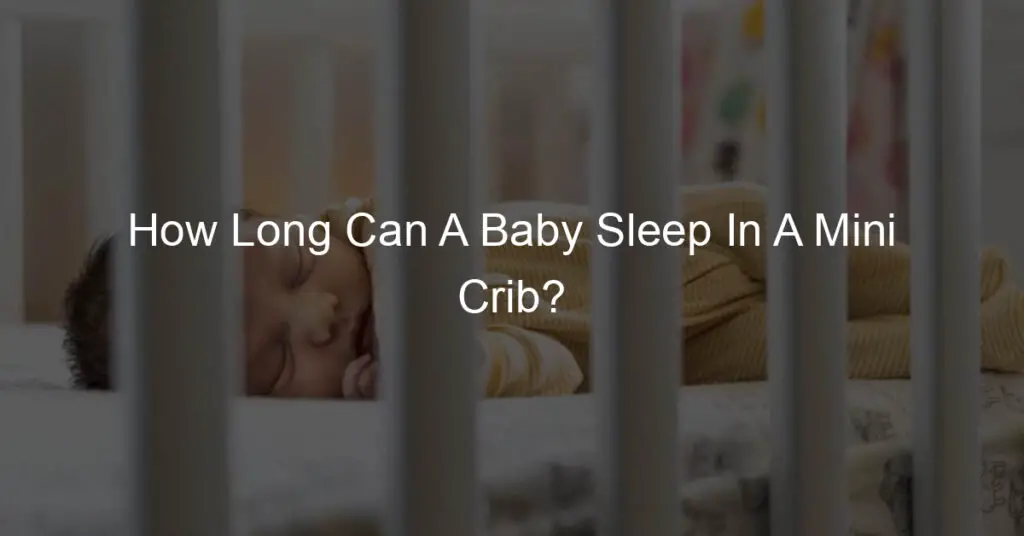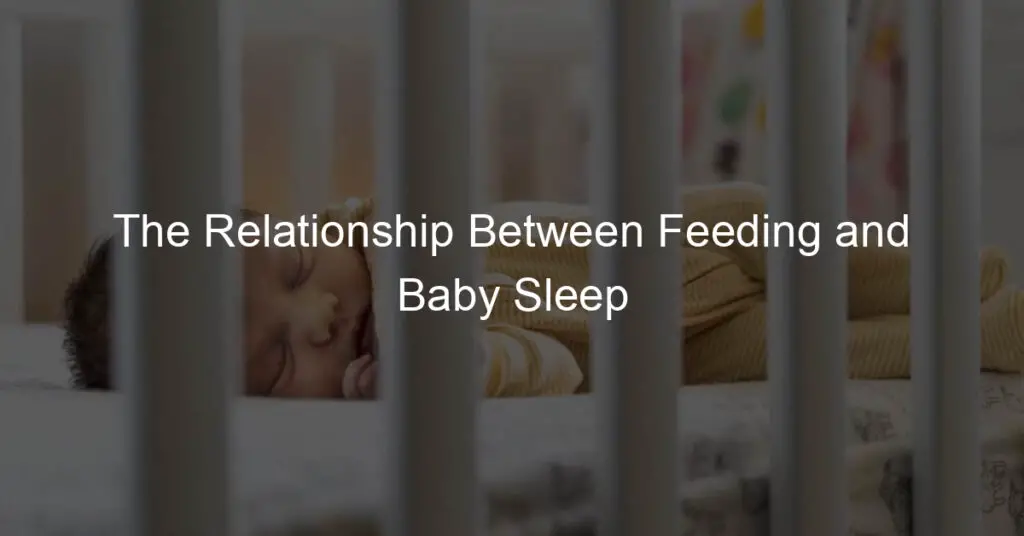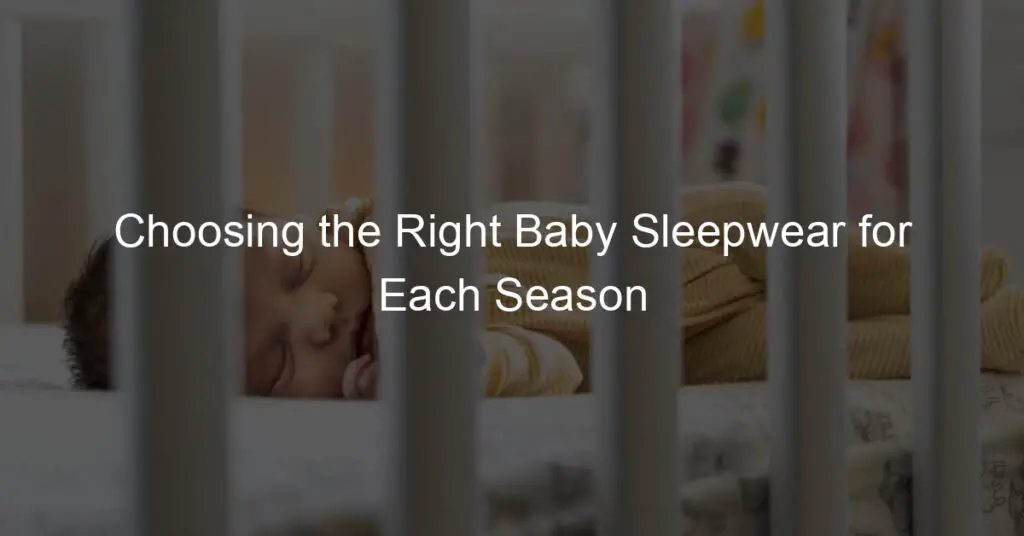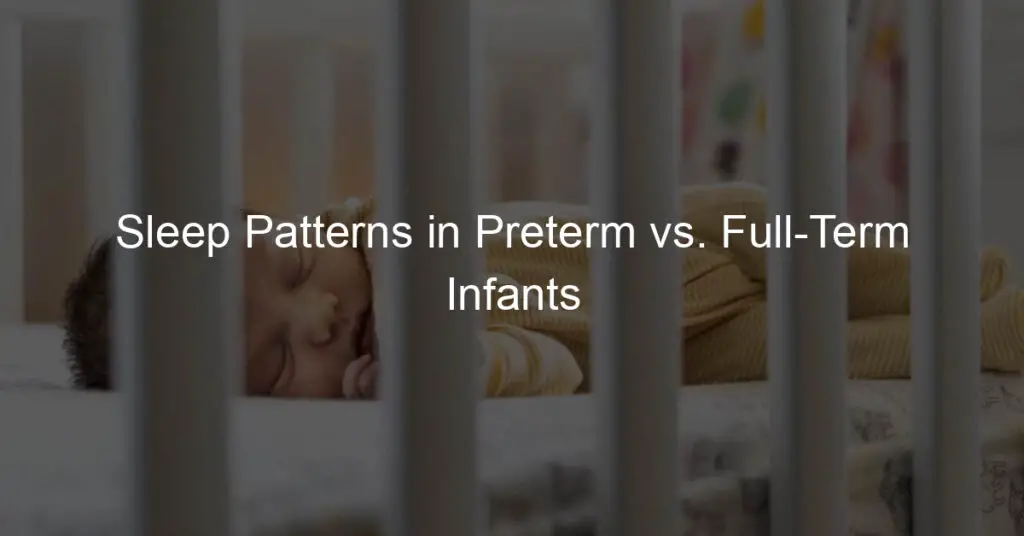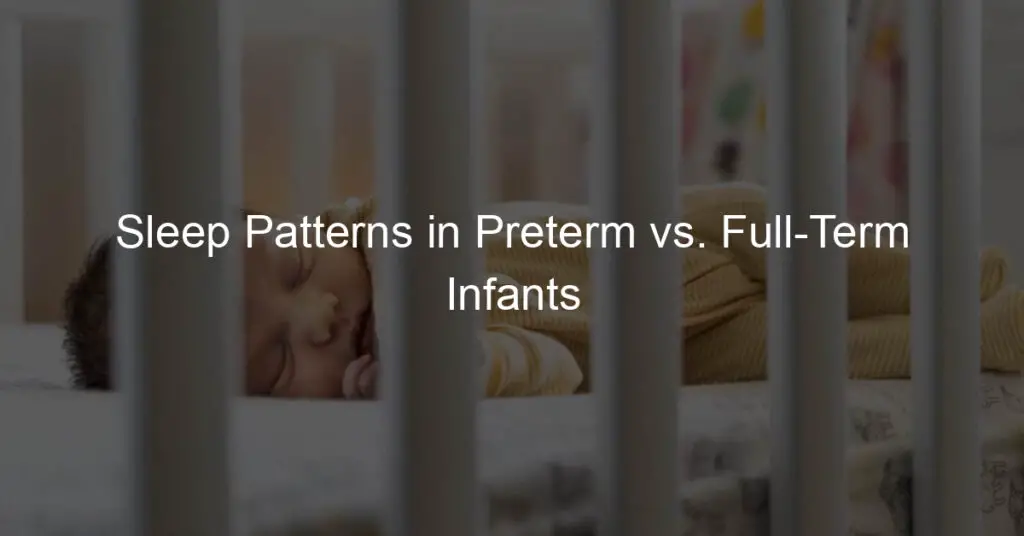Introduction to Mini Cribs
When it comes to preparing for a new baby, one of the most important decisions parents have to make is choosing where their little one will sleep. Among the various options available, mini cribs have gained popularity for their unique advantages. In this section, we will explore what a mini crib is and the benefits it offers for your baby.
Definition of a mini crib
A mini crib, as the name suggests, is a smaller version of a standard crib. It measures around 24 inches wide and 38 inches long, making it significantly more compact than a regular crib. Mini cribs are designed to provide a safe and comfortable sleeping environment for babies, while taking up less space in your home. They are ideal for smaller rooms or for parents who want to maximize their living area. (source)
Benefits of mini crib for baby
Mini cribs offer several benefits for both babies and parents. For babies, the smaller size can create a cozy and secure feeling, which can help promote better sleep. They are also typically easier to move around, which means you can keep your baby close to you throughout the day. For parents, mini cribs are often more affordable and easier to assemble than larger cribs. Plus, they can be a great solution for those living in apartments or homes with limited space.
In the following sections, we will delve deeper into the safety aspects of mini cribs, review some of the best mini cribs available on the market, and provide tips on transitioning your baby from a mini crib to a bed. Stay tuned for more helpful information on this essential baby gear.
Mini Crib Safety
Ensuring the safety of your baby while they sleep is a top priority. One of the ways to achieve this is by following the general safety guidelines when using a mini crib. Here are some important tips to keep in mind:
General Safety Guidelines
1. Choosing the right mini crib
Not all mini cribs are created equal. When choosing a mini crib, consider the safety features it offers. Look for cribs that meet the safety standards set by the Consumer Product Safety Commission. These cribs have sturdy frames, no drop sides, slats that are close together to prevent your baby from slipping through, and no decorative cutouts that could trap your baby’s head.
2. Proper positioning of the mini crib
The placement of the mini crib in your room can also contribute to your baby’s safety. The crib should be placed away from windows, blinds, and curtains to avoid the risk of strangulation. It should also be away from heaters, lamps, wall decorations, and furniture that your baby could pull onto themselves.
3. Importance of mini crib bedding
The bedding you choose for your mini crib is crucial. Use a firm mattress that fits snugly in the crib without any gaps. Avoid using pillows, blankets, bumpers, or stuffed animals in the crib as these can pose a suffocation risk. Instead, dress your baby in a wearable blanket or other type of sleep clothing that doesn’t require additional covers.
By following these general safety guidelines, you can ensure that your baby’s mini crib is a safe place for them to sleep and rest.
Newborn Sleep in Mini Crib
Understanding the sleep patterns of newborns and ensuring their safety while they sleep in a mini crib are crucial aspects of parenting. Let’s delve into these topics.
Understanding Newborn Sleep Patterns
Newborns, typically, sleep for a total of 14 to 17 hours a day, spread over the course of 24 hours. Their sleep is divided into numerous short periods. Newborns do not have a set day or night sleep schedule. They sleep in cycles of deep sleep, light sleep, and brief periods of wakefulness. Understanding these patterns can help parents anticipate their baby’s sleep schedule and plan accordingly. For more detailed information, you can visit this Wikipedia page.
How Long Can a Newborn Safely Sleep in a Mini Crib?
A mini crib is a smaller version of a standard crib, designed to provide a cozy, secure sleeping environment for newborns. The American Academy of Pediatrics recommends that babies sleep in the same room as their parents, but not in the same bed, for at least the first six months. A mini crib can be an excellent solution for this, as it takes up less space.
However, the duration a newborn can safely sleep in a mini crib depends on several factors, including the baby’s size, mobility, and comfort. Generally, a baby can sleep in a mini crib until they start to push up on their hands and knees or show signs of outgrowing it, which is typically around 18 months. It’s essential to monitor your baby’s development and adjust their sleeping arrangements as necessary.
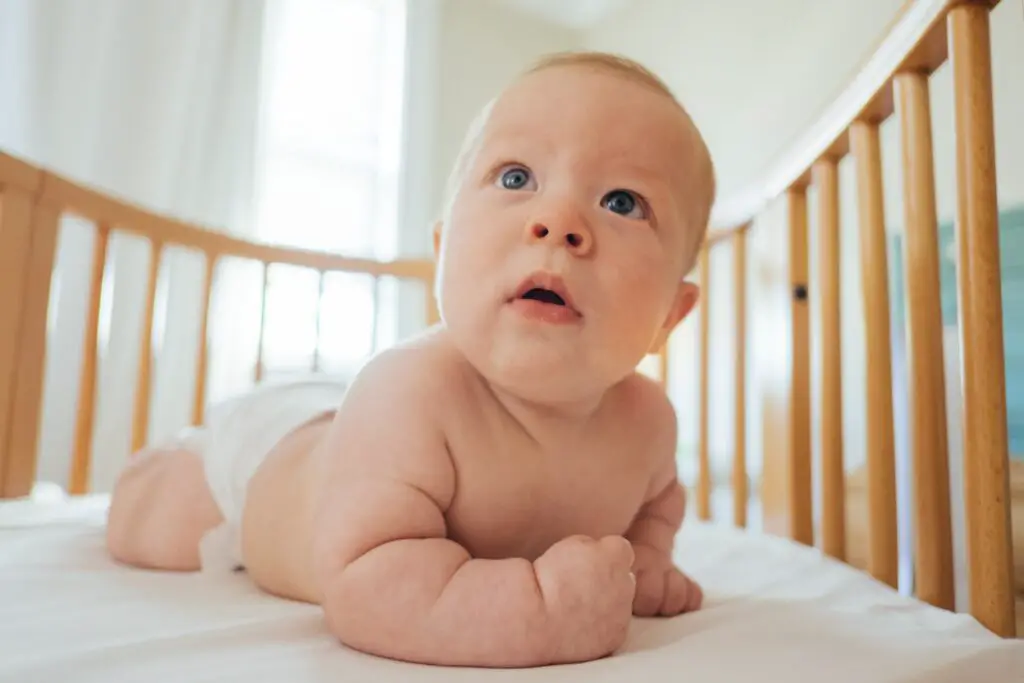
Best Mini Cribs for Babies
Choosing the right crib for your baby is crucial for their comfort and safety. Mini cribs are an excellent choice for parents who are looking for a space-saving, portable, and budget-friendly option. In this section, we will review the top 5 mini cribs and discuss the key features to look for when buying a mini crib.
Review of Top 5 Mini Cribs
Here are our top picks for the best mini cribs:
| Rank | Brand | Model | Key Features |
|---|---|---|---|
| 1 | Dream On Me | Aden 4-in-1 Convertible Mini Crib | Adjustable mattress height, convertible, solid wood construction |
| 2 | Babyletto | Origami Mini Crib | Collapsible for easy storage and transport, adjustable mattress height |
| 3 | DaVinci | Kalani 2-in-1 Mini Crib | Convertible, adjustable mattress height, made from sustainable New Zealand pine |
| 4 | Delta Children | Portable Mini Crib | Portable, adjustable mattress height, easy to assemble |
| 5 | Stokke | Sleepi Mini Crib | Oval shape for a cozy environment, adjustable mattress height, wheels for easy mobility |
Key Features to Look for in a Mini Crib
When shopping for a mini crib, consider the following features:
Size: Mini cribs are smaller than standard cribs. Make sure it fits in your space and is large enough for your baby.
Portability: Some mini cribs come with wheels or can be folded up for easy transport.
Adjustable Mattress Height: This feature allows you to lower the mattress as your baby grows, keeping them safe and secure.
Convertible: Some mini cribs can be converted into toddler beds, extending their lifespan.
Material: Look for cribs made from non-toxic, sturdy materials for safety and durability.
Choosing the best mini crib requires careful consideration of your needs, space, and budget. By keeping these key features in mind, you can ensure that you’re making the best choice for your baby’s comfort and safety.
Baby Sleep Schedule
Understanding your baby’s sleep schedule can be a daunting task for new parents. However, it’s crucial to comprehend their sleep patterns to ensure they get the rest they need for healthy growth and development.
Understanding Baby Sleep Patterns
Babies have different sleep patterns compared to adults. Their sleep cycle is shorter and they spend more time in rapid eye movement (REM) sleep, which is a lighter sleep stage where dreams occur. Let’s delve into some common questions about baby sleep patterns.
How much sleep does a baby need?
The amount of sleep a baby needs varies with age. Newborns sleep about 16-18 hours a day, with periods of wakefulness lasting 1-3 hours. However, by the age of 6 months, many babies sleep 10 hours a night and take two naps during the day. It’s important to remember that every baby is unique and there may be variations in their sleep needs.
How often should a baby sleep?
Newborns sleep in short bursts of 2-4 hours throughout the day and night. As they grow older, they start sleeping for longer stretches. By the age of 6 months, most babies are capable of sleeping through the night, and their daytime sleep gradually consolidates into one to two naps. Again, these patterns can vary from baby to baby.
Understanding your baby’s sleep patterns can help you establish a healthy sleep schedule and ensure your baby gets the rest they need. Remember, good sleep is essential for your baby’s growth and development.
Baby Sleep Training
- What is sleep training?Sleep training, also known as sleep teaching or sleep learning, is a process that helps babies learn to fall asleep on their own and stay asleep through the night. It involves establishing a consistent bedtime routine and teaching your baby to self-soothe. This process is usually started when the baby is between four to six months old, when they are developmentally ready to sleep for longer periods at night. Learn more about sleep training on Wikipedia.
- Benefits of sleep trainingThere are several benefits of sleep training for both babies and parents. For babies, it helps establish healthy sleep habits, which are crucial for their physical and mental development. It also helps them learn self-soothing skills, which are important for their emotional development. For parents, sleep training can lead to more uninterrupted sleep and less stress. A well-rested parent is more likely to be patient, attentive, and emotionally available for their child.
- How to start sleep trainingStarting sleep training involves a few key steps. First, establish a consistent bedtime routine. This could include activities like a warm bath, a bedtime story, and a lullaby. Second, put your baby to bed when they’re drowsy but still awake. This helps them associate the crib with falling asleep. Third, if your baby wakes up in the night, wait a few minutes before going in to comfort them. This gives them a chance to self-soothe and fall back asleep on their own. Remember, every baby is different, and what works for one may not work for another. It’s important to be patient and flexible during this process.
Transitioning from Mini Crib to Bed
One of the most significant milestones in your child’s early years is transitioning from a mini crib to a bed. This transition is a big step for both parents and child, and it’s essential to approach it with careful planning and patience. In this section, we will discuss the appropriate time to make this transition and provide some practical steps to make the process smoother.
When to transition from mini crib to bed
There isn’t a universal ‘right’ age to transition your child from a mini crib to a bed. It largely depends on your child’s development and readiness. However, most children make the switch between 1.5 to 3.5 years old. It’s crucial to look for signs that your child is ready for this transition. For instance, if your child is climbing out of the crib or asking for a big bed, it might be time to consider the switch. Remember, each child is unique, and what worked for one might not work for another. Always consider your child’s comfort and safety first.
Steps to make the transition smoother
Transitioning from a mini crib to a bed can be a big change for a child. Here are some steps to make the process smoother:
-
- Prepare your child: Start by talking to your child about the transition. Read them books about it and involve them in the process of choosing their new bed and bedding.
- Make the new bed inviting: Make the new bed as comfortable as possible. Use their favorite bedding and consider adding a new stuffed animal or blanket.
- Keep the bedtime routine consistent: Maintain the same bedtime routine to provide a sense of familiarity and comfort. This consistency will help your child adjust to the new sleeping arrangement.
- Be patient: It’s normal for your child to take some time to adjust to the new bed. Be patient, provide reassurance, and celebrate small wins to encourage them.
In conclusion, transitioning from a mini crib to a bed is a significant milestone in your child’s life. It’s essential to approach this transition with patience and understanding. Remember, every child is unique, and it’s important to respect their pace and comfort during this transition.
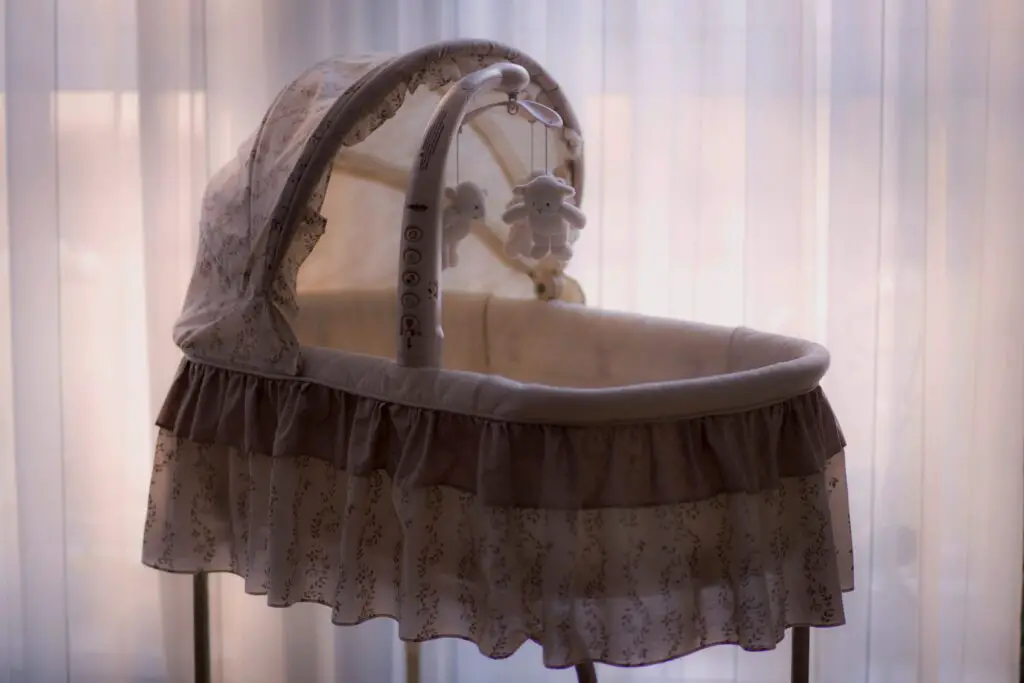
Mini Crib vs Regular Crib
When it comes to choosing a crib for your baby, the decision can be overwhelming. There are many factors to consider, and one of the most significant is the size of the crib. In this section, we will compare the size of a mini crib and a regular crib, and discuss the pros and cons of each.
Size Comparison
Mini cribs are smaller than regular cribs. A standard mini crib measures about 38 inches long by 24 inches wide, while a regular crib is typically 52 inches long by 28 inches wide. This difference in size can have a significant impact on your choice, depending on the size of your nursery and your specific needs.
Pros and Cons of Each
| Mini Crib | Regular Crib | |
|---|---|---|
| Pros |
|
|
| Cons |
|
|
In conclusion, the choice between a mini crib and a regular crib depends on your specific needs and circumstances. If you have limited space or need to move the crib around frequently, a mini crib may be the best option. However, if you have more space and want a crib that your baby can use for a longer period, a regular crib may be a better choice.
Conclusion
- Recap of Mini Crib Safety and Benefits
Throughout this article, we have explored the world of mini cribs and their importance in your child’s early years. We have highlighted the safety aspects, ensuring that your baby’s sleeping environment is secure and comfortable. The mini crib’s compact size, portability, and affordability make it a practical choice for many families. It is essential to remember that safety should always be the priority, and adhering to the guidelines we have discussed will ensure your baby has a safe and cozy sleeping space. - Final Thoughts on Using a Mini Crib
In conclusion, a mini crib is a valuable investment for your baby’s first few years. It provides a safe, comfortable, and convenient sleeping environment, especially in smaller living spaces. However, transitioning from a mini crib to a regular bed is a significant milestone that requires careful planning and patience. As parents, your understanding and support during this transition phase are crucial. Remember, every child is unique, and what works for one may not work for another. So, take your time, observe your child’s readiness, and make the transition at a pace that suits your child best.

